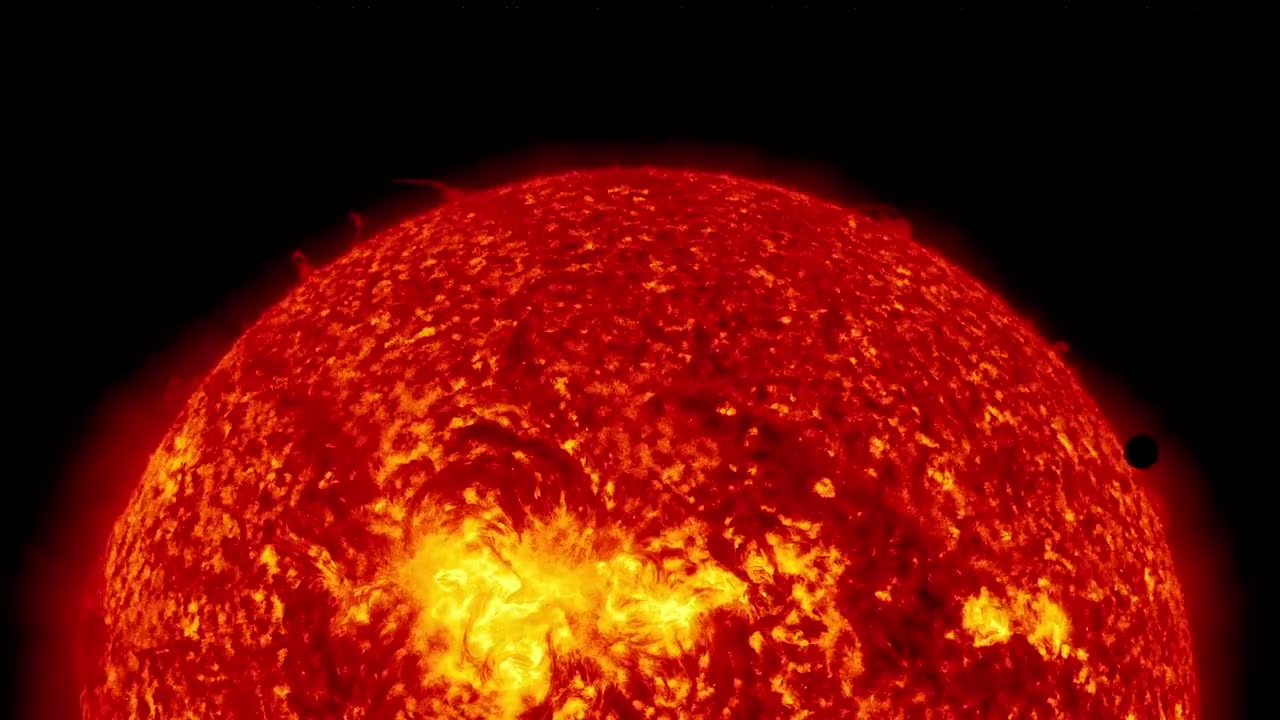Premium Only Content

"Capturing Venus in Unprecedented Detail: NASA's SDO Witnessed the 2012 Transit"
Welcome to our channel, your gateway to the captivating world of NASA space exploration and beyond. Embark on a cosmic journey as we bring you the latest and most awe-inspiring videos straight from the frontiers of the universe. Join us in unraveling the mysteries of distant planets, witnessing breathtaking rocket launches, and delving into the groundbreaking research conducted aboard the International Space Station. Whether you're a space enthusiast, an astronomy aficionado, or simply curious about the cosmos, our channel offers a front-row seat to the wonders of space science and technology. Subscribe now and prepare to be mesmerized by the celestial wonders that NASA unveils, right here on our channel. Explore, learn, and dream with us as we venture into the final frontier!
Launched on Feb. 11, 2010, the Solar Dynamics Observatory, or SDO, is the most advanced spacecraft ever designed to study the sun. During its five-year mission, it will examine the sun's atmosphere, magnetic field and also provide a better understanding of the role the sun plays in Earth's atmospheric chemistry and climate. SDO provides images with resolution 8 times better than high-definition television and returns more than a terabyte of data each day. On June 5 2012, SDO collected images of the rarest predictable solar event--the transit of Venus across the face of the sun. This event happens in pairs eight years apart that are separated from each other by 105 or 121 years. The last transit was in 2004 and the next will not happen until 2117. The videos and images displayed here are constructed from several wavelengths of extreme ultraviolet light and a portion of the visible spectrum. The red colored sun is the 304 angstrom ultraviolet, the golden colored sun is 171 angstrom, the magenta sun is 1700 angstrom, and the orange sun is filtered visible light. 304 and 171 show the atmosphere of the sun, which does not appear in the visible part of the spectrum.
#Extraterrestrial life
#Hubble Space Telescope
#International Space Station
#Spacecraft
#Earth from space
#Space history
#Mars missions
#Lunar exploration
#Spacewalks
#Cosmic phenomena
#Space
#Universe
#Celestial objects
#Space science
#Rocket launches
#Space technologySpace missions
#PlanetsAstronauts
#NASASpaceAstronomy
-
 LIVE
LIVE
The HotSeat
34 minutes ago🚨 Dems Swear Mail-In Voting Is “Secure”… Trump Says HELL NO 🚨
243 watching -
 DVR
DVR
Stephen Gardner
36 minutes ago🔥YES! Trump unleashes Democrats’ worst nightmare!
-
![[Ep 731] Trump Leading the World | Islam NOT Compatible with West | Guest Sam Anthony [your[NEWS](https://1a-1791.com/video/fww1/93/s8/1/c/n/K/a/cnKaz.0kob-small-Ep-731-Trump-Leading-the-Wo.jpg) LIVE
LIVE
The Nunn Report - w/ Dan Nunn
1 hour ago[Ep 731] Trump Leading the World | Islam NOT Compatible with West | Guest Sam Anthony [your[NEWS
111 watching -
 2:05:30
2:05:30
Side Scrollers Podcast
4 hours agoEveryone Hates MrBeast + FBI Spends $140k on Pokemon + All Todays News | Side Scrollers Live
58.7K2 -
 46:56
46:56
The White House
4 hours agoPress Secretary Karoline Leavitt Briefs Members of the Media, Aug. 19, 2025
30K40 -
 1:11:36
1:11:36
Sean Unpaved
3 hours agoFootball Flashpoint: Bengals' D in Distress, Colts' Bet on Jones, & Micah's Trade Talks
22.9K2 -
 LIVE
LIVE
The Robert Scott Bell Show
53 minutes agoVaccine Lawsuits & Legal Fights, Autism–ADHD Link to Tylenol, MAHA Action, Caitlin Sinclair, Fat Jabs for Pets - The RSB Show 8-19-25
80 watching -
 2:57:22
2:57:22
Right Side Broadcasting Network
7 hours agoLIVE REPLAY: White House Press Secretary Karoline Leavitt Holds a Press Briefing - 8/19/25
76.1K46 -
 1:03:48
1:03:48
Timcast
4 hours agoGavin Newsom SURGES In Polls, COPIES Trump's Style
142K115 -
 4:37
4:37
Michael Heaver
9 hours agoBusted France Faces UPRISING
18.3K3